Breaking Update: The Correct Length For “Olsen’s Champ”?
Posted by: Loren Coleman on June 15th, 2009
Breaking Update
Is this the answer?
Just passed along to me is this new video analysis of the length of the object in the water, from Al.
Calculating Champ size based on triangulation of videographer location and reference points.
Frame 1022 used to establish creature size for all the 3 frames used in this calculation from Olsen Video.
++++++++ Below is my earlier posting with various images and videos to be used for comparison.
This cryptid (an unidentified animal) being called “Champ” on Eric Olsen’s intriguing footage is, well, how long? We don’t know yet?
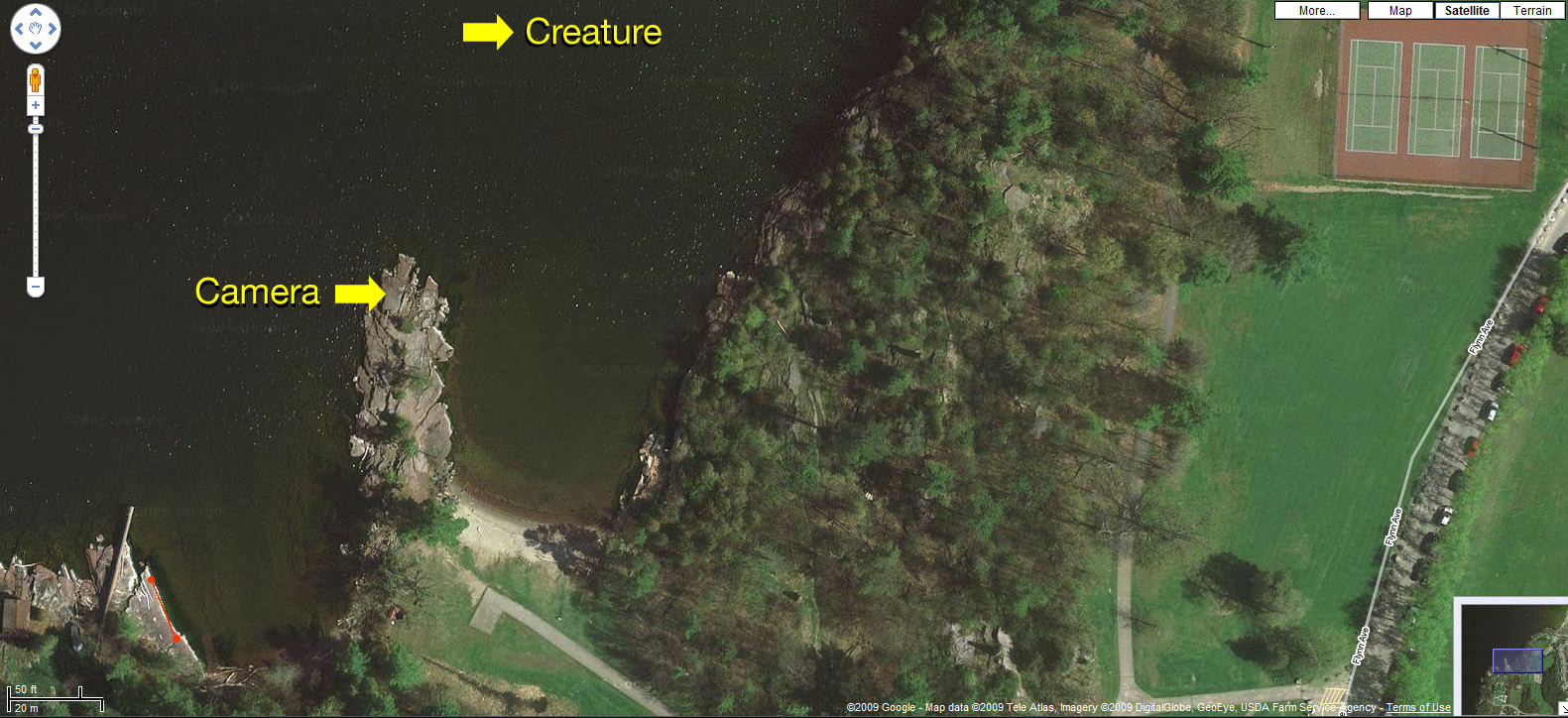
(The tennis court in this shot has the known dimensions of 36 ft x 78 ft.)
Even though I’ve asked people to swim out to one or more of the buoys and measure them, no one has taken me up on my request. Hey, on those golf telecasts, they talk about having ways to measure, with lasers, how far the ball is from the cup. Why don’t cryptozoologists have a few of those?
Come on folks. Let’s join the 21st century here, and figure this one out. How big is this animate object that was captured as a digital image on Olsen’s phonecam on May 31, 2009?
Here is a brand new analysis of the Olsen footage, specifically of the wave disturbances as a way to try to figure out the length of the creature. It is from “Al.”
+++
++++
+++++
++++++
+++++++
++++++++
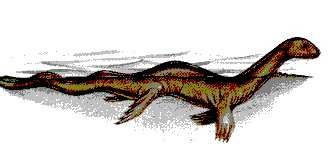
Bernard Heuvelmans’ Super-Otter (above) compared to images from Eric Olsen’s new footage (above the Super-Otter and below).
How big is this thing?
Thank You.
About Loren Coleman
Loren Coleman is one of the world’s leading cryptozoologists, some say “the” leading living cryptozoologist. Certainly, he is acknowledged as the current living American researcher and writer who has most popularized cryptozoology in the late 20th and early 21st centuries.
Starting his fieldwork and investigations in 1960, after traveling and trekking extensively in pursuit of cryptozoological mysteries, Coleman began writing to share his experiences in 1969. An honorary member of Ivan T. Sanderson’s Society for the Investigation of the Unexplained in the 1970s, Coleman has been bestowed with similar honorary memberships of the North Idaho College Cryptozoology Club in 1983, and in subsequent years, that of the British Columbia Scientific Cryptozoology Club, CryptoSafari International, and other international organizations. He was also a Life Member and Benefactor of the International Society of Cryptozoology (now-defunct).
Loren Coleman’s daily blog, as a member of the Cryptomundo Team, served as an ongoing avenue of communication for the ever-growing body of cryptozoo news from 2005 through 2013. He returned as an infrequent contributor beginning Halloween week of 2015.
Coleman is the founder in 2003, and current director of the International Cryptozoology Museum in Portland, Maine.

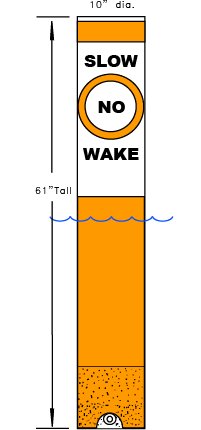
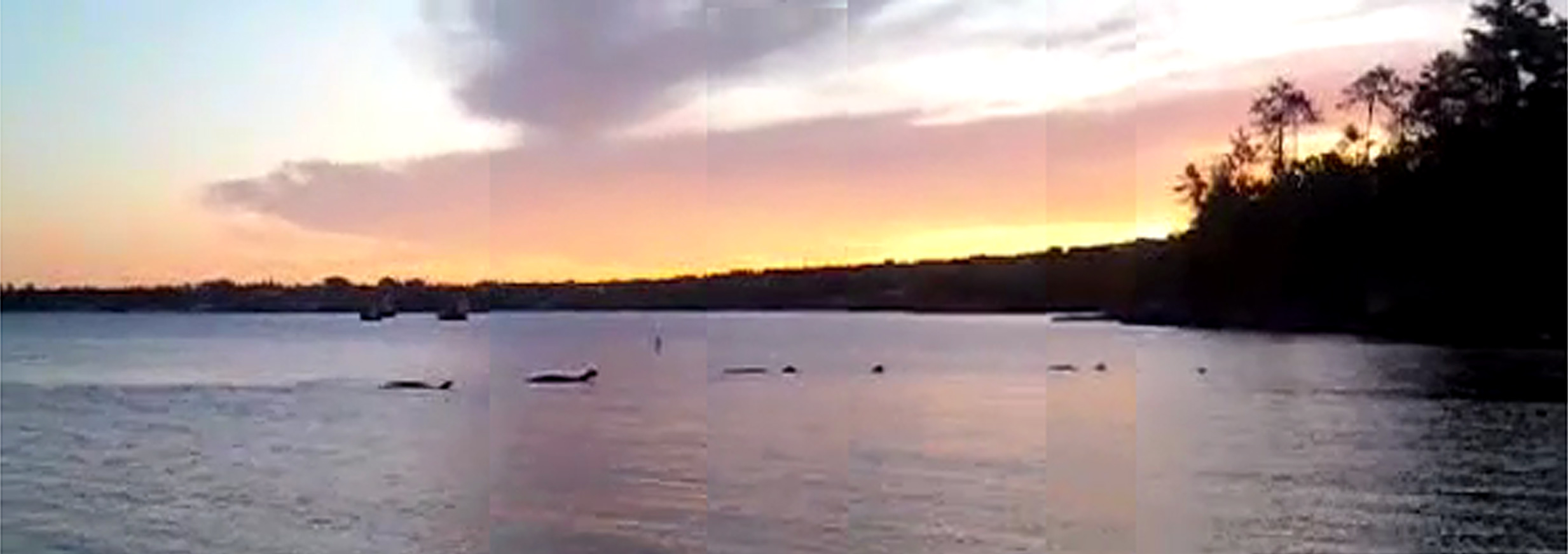


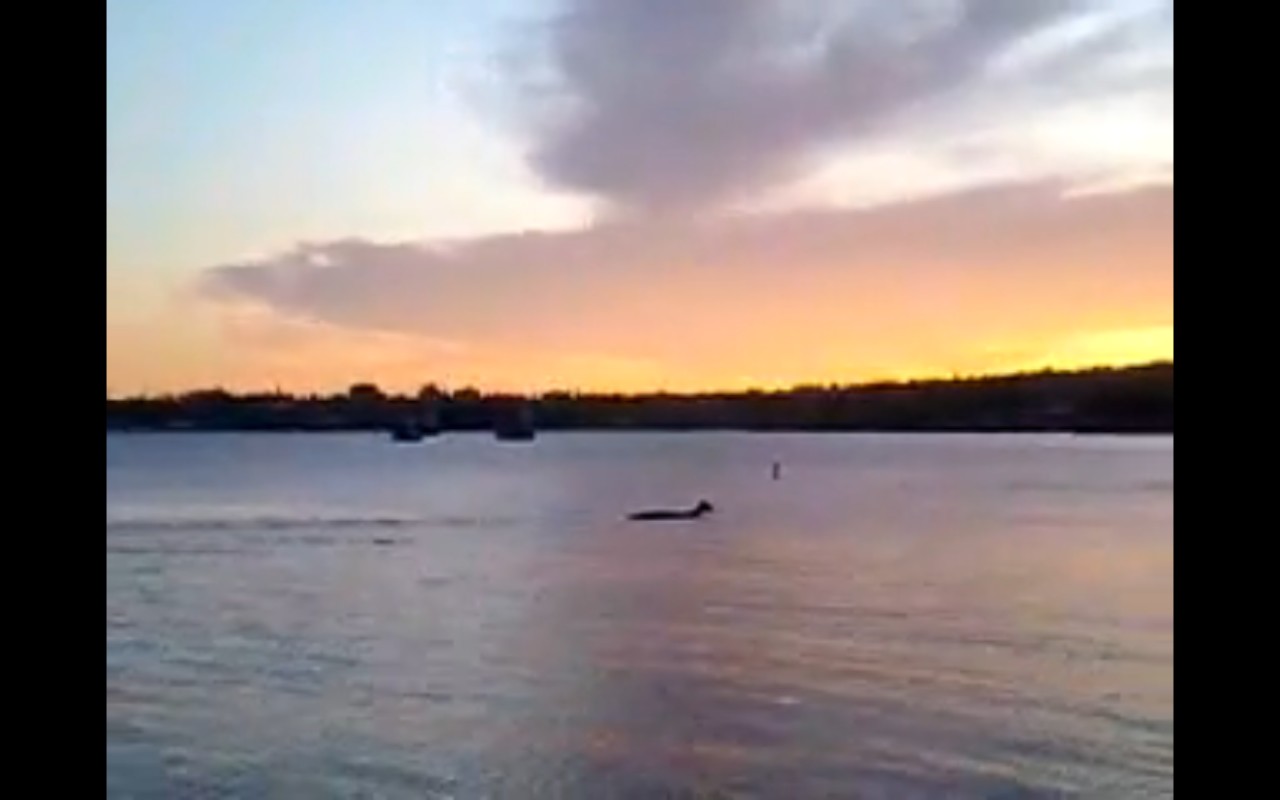


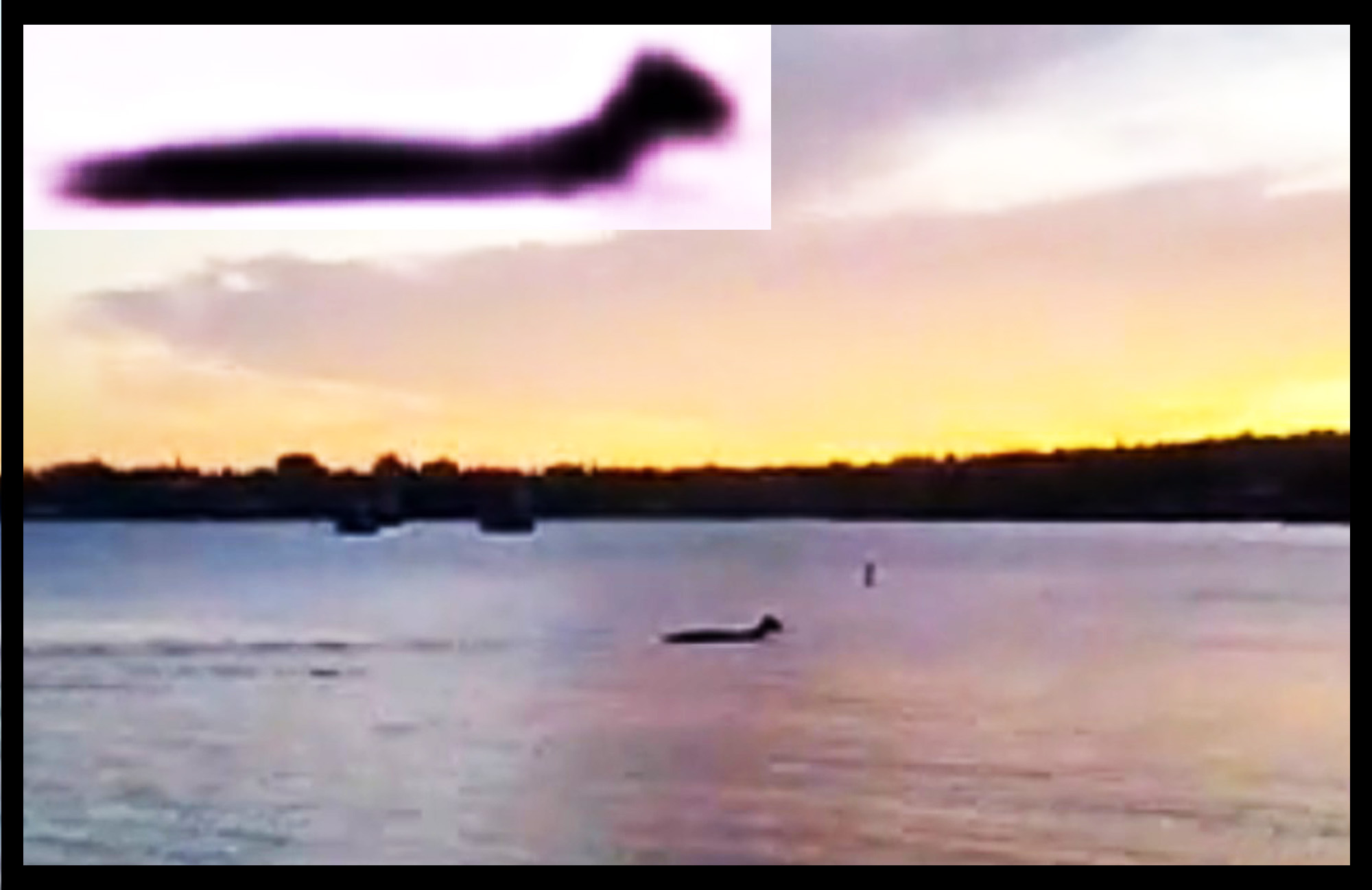
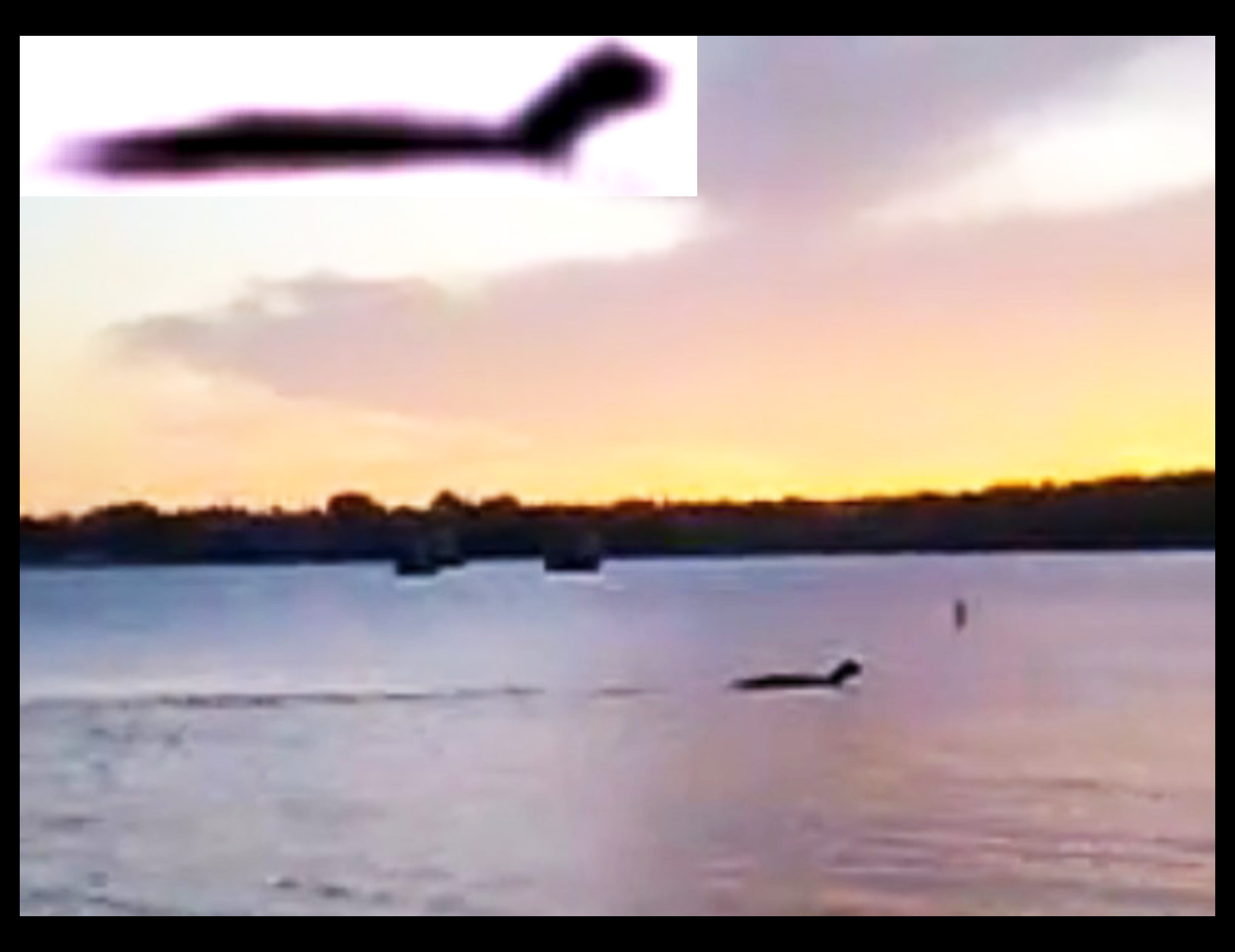









In picture #6 you can see a person on the land with the buoy(sp?) in the water. The Buoy doesn’t appear to be a lot closer to the camera than the person is. It seems the buoy is exposed above the water’s surface by about the height of a human, possibly 5-6 feet.
In picture #5 a buoy is located quite a distance behind the creature. I’d estimate It is at least 25% further from the creature than the creature is from the land. Either way, the creature is very large in comparison to the buoy(Which of course could be just distance, I’m just making assumptions based on the pics).
the creature seems to be 3-4 times longer than the buoy is tall. So 15-20 feet long. Assuming the buoy is pretty far out, I’d wager 8-12 feet long on the exposed portion of the creature.
Just my guess.
Also, I just want to say, this does NOT look like a Moose or Deer. They have Ears, the creature does not. They swim with their noses tilted skyward, the creature does not. Deer are generally skinny with slim build, the creature looks “chunky”. Moose are big, and would likely fit the size, but Moose have very long faces, ears, and likely antlers, the creature has none.
IMO it does not swim like either a marine animal, or a land animal. I don’t know what to make of it.
Are there any modern architects living near lake Champlain, with a laser-based measuring device, who could clear this mystery out?
C’mon!
That looks an awful lot like a ‘Slow No Wake’ buoy. I have swam up to one before, quite a while ago, and I perceived it to stick out about 3.5 feet from the water.
This no wake buoy, while clearly not a match (to yours or mine) ‘rises 40″ above the water line for outstanding visibility.’ I would use 40 inches as your starting point.
THANK YOU!!! It is about time we figured out the length of the thing…
if we can measure the buoy, we should be able to compare it to the overall length of the critter seen, plus gauge how high it’s actually up out of the water…alright, alright, of course I have been toooo lazy to look for sizes of buoys and mathematical formulas or what not, but I just ASSumed there were more devious people out there:) that would be way ahead of me on that front…
If we can determine the length then we can rule out otters, deer (oh brother) and yes, moose…OR NOT, and then go from there.
Seems like a beautiful plan to me…alright, I am going to go dig up some facts and see what I come up with
I’m with Loren, someone needs to go take a swim to give us a good frame of reference.
I’d do it, but it’s a long haul from Tennessee.
That buoy is a no wake buoy, and having installed a few dozen of the damn things at the marina I’ve worked at I can say that the above guess of 40″ is about right. At least, for the out of the water portion. I’d have said 42″, but I never actually took a tape measure to the things.
However, no need to swim. Take a boat out to it, and stick a measure on it. Or a kayak. Or a canoe. If I was in the area, I’d have already done it.
This is so unscientific, but here it goes.
I took the photo of the creature above and used the uber scientific approach of sticking a post it note on my computer screen and ticked off the size of the buoy, then moved the note to tick off the size of champ. Champ is within a couple of pixels of the same height.
If we assume that the buoy is fairly standard at 40″ as discussed above, then the creature must be out of the water, in that photograph, by less than 40″.
For what its worth.
as an appraiser, i use aerial and satellite photography to take measurements a lot. i would check the county website for the area where this picture is taken. using their records (see if this lake has a tax map number) you may be able to find asurvey or use their aerial photography to get a topographical measurement reference. if they keep it up to date, the bouy should be in the picture too. i know i can do it with my county’s system, but not all counties are totally online.
i’ll look if someone tells me the county. other than that, i am only qualified to make measurement estimates based on the buildings in the background from architectural standards. that won’t give you distances.
How far is the bouy from the place where Olsen filmed the creature? If that could be determined (and that should be easy), and if somehow the (more or less precise) distance of the creature itself from either the buoy or Olsen’s vantage point could be also determined (with computer? some kind of technology?), then someone could be filmed (from Olsen’s vantage point) simply rowing a boat of a known length across the same plane of vision toward the shoreline (taking the same path as the creature, much as John Green re-enacted the Patterson-Gimlin film, using the 6′ 5″ tall Jim McClarin.
Comparing the Olsen footage with this footage might allow a ballpark estimate.
Unfortunately, I’m not very good at math. I must admit that sometimes I still count with my fingers. (The shame. Paper bag over head). 🙂
It’s a miracle I passed algebra in high school. Must have had a “guardian angel.”
Which is why it’s a pleasure to be able to deal with people here who ARE good at this and are able to give the correct measures and estimates.
I agree with Runwolf. Just take a boat out there and measure the bouy. No need to possibly freeze in the water or exert oneself in the water swimming out towards it.
And I must reiterate the fact that that sketch by Heuvelmans of the “Super Otter” is a dead ringer (at least head and length-wise) to what we see in the Olsen video.
Bernard Heuvelmans, posterity may richly award you the title of “prophet ahead of his times.”
Indeed.
Once we get to a more accurate estimate as to how big and long the creature is, then we can more accurately then get to dtermine maybe whait may be and what it may NOT be. Good luck, folks.
its moose size.
The creature or whatever it was was 8.4 feet long, that is the part visible over the surface. Ok, it is moose size, but it still makes no moose. Who cut off its ears? I have seen moose swim and the ears is one of the things you first notice, and possible antlers unless it is a calf or a female. Secondly, mooseheads have long jaws, which does not seem to fit the pictures above.
If this is a moose, it is a shortfaced and earless moose. May be it is the new aquatic moose species that is up for air now and then. If it is an otter, there are gigantic otters about that should be seen ever so often when they come up to breathe. Humour and fantasy aside, the creature ought to be far longer than 8.4 ft, since there is no way of knowing how long the body is, and the added length of a tail for propulsion. Get some people up there and snap pics of a towed presumably similar oject to establish its real length (only the visible part). A still photo with few indications of scale won`t do.
This might help.
[Image of the referenced illustration of the kind of buoy seen on the Olsen footage has been uploaded above, in the posting. – Cryptomundo editor.]
My calculations (I won’t go into all of them) based on the images above AND the “alleged” distances of 200 ft from videographer (which, on a side note is new to me since the true location of this “thing” keeps changing) puts the “thing” at just about 6 feet even. Toe-tip to toe-tip “stretched out” my moderate sized golden retriever is 4 feet long. (It is good to keep known animal dimensions in perspective.) Draw whatever conclusions you want, but this “thing” is not near as big as some would have you believe. Six feet, stretched out swimming, is NOT that big of an animal.
The more I see this the more it looks like a black lab, you know someone threw a stick, rover swims out and back, ect… Me more than anybody would be thrilled if there really were monsters and dinosaurs lurking around. So far nothing other than blurry photos and unprovable stories are all that has literally surfaced.
Does anyone else think the head of that animal looks a lot like that of a cat?
Swimming puma, perhaps?
Assuming this is real and not a hoax (of which I’m not convinced), I’d be a lot more comfortable with this as a Giant Beaver (Castoroides ohioensis), which only disappeared about 12000 years ago, than as a previously unknown “Super Otter”.
What are the objects in the back ground … boats, islands, ???
Those buildings are not there in google earth search… this can’t be the right location!
This doesn’t make sense.
The “visible length” that is on the table for discussion is 24 feet, according to the latest analysis that takes into account the multiple appearances of a “tail” or back end of the animate object. People are not watching the entire video if you are only commenting on the 8.4 feet visible on the frozen frame shot on the YouTube screen.
Clearly, a darker object, different in coloring than the waves, makes an appearance behind the main body of the object.
What are the opinions on that length?
My opinion is that the “tail” is nothing more than a wake playing optical tricks. Towards the rear of the image there appears to a slope, indicating the rear of the animal (Looking rather mammalian). Also in another one of the images (around 30 seconds in, when the rear sinks and the front bobs upwards [when it doesn’t appear to be animate at all]), I can see what I perceive to be the front of a mammal…slightly more muscular build and definition around the shoulders…
Just my opinion…nothing says fish, reptile, or amphibian about this video.
It most looks like a feline to me…but the otter footage, save for the playfulness, is very similar. Ill otter? Otter in distress? Puma was an interesting hat to throw into the ring…
Otters — for example — are very good at “disguising” their numbers when they swim in groups (whether or not they do this on purpose I have no idea). Anyway, it can often be difficult to determine exactly how many individuals are present. I’m wondering if that other form that seems to pop up well to the rear is actually the head of another individual.
If the length on the table is 24 feet, I have to ponder something. I have not seen anything in any of the images that in any way convinces me that this thing is anywhere near that long. I agree with grantmj on the “wave optical illusion” theory. How did anyone come up with an interpretation that suggest 24 feet?
If you closely at the stabilized footage, there’s a ripple of some kind consistently behind (to the left, in the image) the visible object. It doesn’t appear to me to be a wake, but instead, it looks as if it’s attached, perhaps below the water. Therefore, if this is a living creature, it may be serpentine and quite a bit longer than anyone here has suggested. Alternately, maybe it’s a cable or hose attached to a mechanical device or inflated object.
I will say, its swimming behavior is very odd. In the stablilized, footage, it appears to come to a complete stop at times, but its shape doesn’t change appreciably as you might expect. Strange.
I don’t think it’s a moose or otter or Labrador. I have no idea what it is.
I don’t I buy a length of 24 feet. I think the object is a lot closer to Olsen than it appears.
Until we get someone out there with a boat or something we can measure against, I’m not going to be convinced of any speculated or “calculated” length.
Also, I’m not willing to eliminate the possibility that it’s something inanimate. I don’t want to parade the notion of the cliched ‘log’, but it hasn’t been properly debunked, either. While the visable portion of the object changes constantly, the base shap doesn’t seem to change all the drastically. Most of this is due to poor lighting and having to deal with a shaded profile of the object.
The depth at the location hasn’t been verified. All that’s been said is that “it’s fairly deep” and “deeper than it usually was due to rain”
If the object were a log(or something else inanimate), the changing shape could be explained by the object dragging on the bottom. (This is movement is somewhat consistent to other logs I have seen in the local lakes).
All this aside, the only thing that really discredits a log is the speed in which it appears to move(inspite of the current). But it could be explained as a deliberate movement(read: hoax)
I don’t want to jump on everyone’s parade, but I’m really kinda shocked that people haven’t gone out to the site and attempted the needed measurements to help determine whatever the object was.
Shoot. You don’t need to swim out. There’s another application of triangulation that works on the vertical triangulation rather than the horizontal form shown here. If I remember my geometry from 10th grade a million years ago.
Determine the height of the individual taking the photo. He is pointing the camera down at a particular angle to intersect the water surface. Ysing that formula I can’t remember, the height of the person calculated with the angle of intersection will give you the length of the base of the triangle, aka the distance from the photographer.
Anyways…as a visual artist and as a lifelong hunter… eyeballing it, and using the ripples of the water as a guide, I estimated the length of the log at between 10 and 15 feet long. I believe the driftwood is being pulled along slowly, periodically slowing to let it sink and bob, through the water by fishing line from the point of land on the left at the beginning, by a person hidden out of frame on the other bank in the brushy shoreline to the right.
Well, from all the videos I’ve seen here, I’m not so sure that “tail” is connected to this animal at all, but I see nothing clear to say that it isn’t. If the animal is 24 feet long, then my previous guess of a juvenile animal is likely way off; a 24 foot juvenile would most likely mean a massive adult.
Also, Korrolocke: a 24-foot Lab? Even an 8-foot one would be implausible, a 24-foot one is just ridiculous.